#john purvey
Explore tagged Tumblr posts
Note
*Norton sighed as he walked into the debriefing room, it wasn't like he was allowed on field missions anymore but as head of the files department it was required for him to go at least once a week. He normally went every time, simply to get a notion of how much rush of reports he'd get in the next week. Besides, he had things to discuss on the subject of the files back at HQ, so it was fairly necessary this time.
He glanced around the room, only a few people being there considering he was a couple minutes early. He blinked tiredly, silently wondering if he could get Giovanni to go next time and put him to work taking notes. He took his seat at the table, quickly logging in to the laptop he'd brought in with him to discuss the intake and destruction of older, unimportant files for physical storage issues.
He looked up from where he started pulling up his spread and data sheets as the General walked in, standing up to attention with everyone else.*
Good morning, Sir.
*He gave John a soft nod, a couple others following suit, but staying silent. It never really made sense to Norton to wait until his commanding officer addressed him unless there was an obvious tone shift in the room leaning towards it, so it didn't really bother him that he was the only one to speak upon his entry.*
@peip-agent-no-5
Hello, agent.
[John waits for the remainder of his people to file in before he begins, alongside some attending virtually on the screen behind him.]
Luckily for us, we haven’t gotten many reports this week. But of the few we have, they’re fairly intensive.
Vanderbilt, I need your crew on cleanup in Fair Banks, Missouri. Our extermination of the carnivorous gnome population left more damage —and witnesses— than intended. Pay off those who saw, and make sure no one else does. I’ll wire you whatever’s necessary.
I also need a reconnaissance squad to circle Lake Tahoe. There have been rumors of kelp monsters in the lake, presumably they got there from the ocean. Colonel Sanders, gather your best people from the California area and send them out with two weeks worth of rations.
As for the recent incident by the Gulf, we still need a few people to track down remnants the cult Carvour previously dealt with. I’ve calculated their most likely positions, and I want two agents sent to each. Alongside multiple squadrons purveying the coastline. They’re water based and likely trying to find a new idol of worship. Lieutenant Bellview, collecting people for that will be your job.
[He takes a deep breath, having finished with the most pressing matters. The remainder of the meeting is spent on logistics, the less glamorous side of secret military organizations. Who needs to be paid off, who needs to be silenced, how to get further funding, etcetera.]
18 notes
·
View notes
Text
Life Without Black People
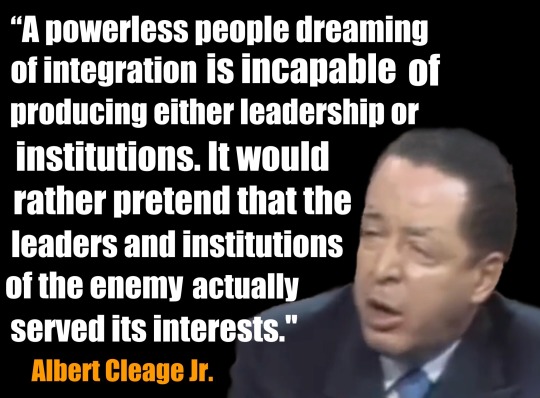
A very humorous and revealing story is told about a group of white people who were fed up with African Americans, so they joined together and wished themselves away. They passed through a deep dark tunnel and emerged in sort of a twilight zone where there is an America without black people.
At first these white people breathed a sigh of relief.
'At last', they said, 'no more crime, drugs, violence and welfare.'
All of the blacks have gone! Then suddenly, reality set in. The 'NEW AMERICA' is not America at all - only a barren land.
1. There are very few crops that have flourished because the nation was built on a slave-supported system.
2. There are no cities with tall skyscrapers because Alexander Mils, a black man, invented the elevator, and without it, one finds great difficulty reaching higher floors.
3. There are few if any cars because Richard Spikes, a black man, invented the automatic gearshift, Joseph Gambol, also black, invented the Super Charge System for Internal Combustion Engines, and Garrett A. Morgan, a black man,
invented the traffic signals.
4. Furthermore, one could not use the rapid transit system because its procurer was the electric trolley, which was invented by another black man, Albert R. Robinson.
5. Even if there were streets on which cars and a rapid transit system could operate, they were cluttered with paper because an African American, Charles Brooks, invented the street sweeper..
6. There were few if any newspapers, magazines and books because John Love invented the pencil sharpener, William Purveys invented the fountain pen, and Lee Barrage invented the Type Writing Machine and W. A. Love invented the Advanced Printing Press. They were all, you guessed it, Black.
7. Even if Americans could write their letters, articles and books, they would not have been transported by mail because William Barry invented the Postmarking and Canceling Machine, William Purveys invented the Hand Stamp and Philip Downing invented the Letter Drop.
8. The lawns were brown and wilted because Joseph Smith invented the Lawn Sprinkler and John Burr the Lawn Mower.
9. When they entered their homes, they found them to be poorly ventilated and poorly heated. You see, Frederick Jones invented the Air Conditioner and Alice Parker the Heating Furnace. Their homes were also dim. But of course, Lewis Lattimer later invented the Electric Lamp, Michael Harvey invented the lantern, and Granville T. Woods invented the Automatic Cut off Switch. Their homes were also filthy because Thomas W. Steward invented the Mop and Lloyd P. Ray the Dust Pan.
10. Their children met them at the door - barefooted, shabby, motley and unkempt. But what could one expect? Jan E. Matzelinger invented the Shoe Lasting Machine, Walter Sammons invented the Comb, Sarah Boone invented the Ironing Board, and George T. Samon invented the Clothes Dryer.
11. Finally, they were resigned to at least have dinner amidst all of this turmoil. But here again, the food had spoiled because another Black Man, John Standard invented the refrigerator...
Now, isn't that something? What would this country be like without the contributions of Blacks, as African-Americans?
Martin Luther King, Jr. said, 'by the time we leave for work, millions of Americans have depended on the inventions from the minds of Blacks.'
Black history includes more than just slavery, Frederick Douglas, Martin Luther Kinbg, Jr., Malcolm X, and Marcus Garvey & W.E.B. Dubois.
PLEASE SHARE, ABUNDANTLY
52 notes
·
View notes
Video
youtube
Ahmad Jamal - Dialogue
lucythegiant
Ahmad Jamal passed away on April 16th. Jazz Journal has an informative obituary.
John White in Jazz Journal. Obituary: Ahmad Jamal
Some saw Jamal as a genius of musical drama, others of melodrama, a supper-club pianist purveying nearly definitive musical bombast
I was a bit surprised by the criticism of melodrama, perhaps that’s because Pittsburgh loves to claim Ahmad Jamal so criticism is out.
This is album has not been released on CD and is a collector’s item.
12 notes
·
View notes
Text
Kay's Whumptober Day #20
Prompt #20: People don't change people. Time does./Found Family Pairing: Evil Uno/Stu Grayson Mentions Of: The Dark Order, The Righteous, Hangman Page Verse: Main

Looking across the ring at the man he loved, Evil Uno wasn't sure that he even recognized him anymore. Any of the warmth, any of the kindness, that had once purveyed his Stu's eyes when they looked at one another was replaced by a coldness and cruelty. How could this happen? Who exactly was to blame for the fact that they now stood across from each other?
In the long run, as much as he loved the opportunity, the trouble had started as soon as they let Hangman Page into their ranks.
The Dark Order had still been reeling from a loss too unspeakable to name when they had decided to let Adam into their group. For a while, everything had been fine. They were a large family, but they were a family none-the-less. They were a family who banded together for the cause that was leading Adam Page to the championship. It had all seemed okay. After all, once Adam was champion then they could all focus on their own goals again. What was family for it not supporting each others dreams?
Colt Cabana was the first to leave their little family, though Uno wouldn't exactly say it had been on his own free will. The arrival of a certain punk to AEW had driven Colt away, no matter how much the fact was denied. Not even a month later, Stu had come to Uno and let him know that he would be leaving soon as well.
Uno hadn't really been surprised when Stu had broken the news to him. An outgoing and warm as Uno had always been, even in his early career, Stu was his anti-thesis. Stu preferred to be on his own, living off the land and by his own accord. It was a gentle difference between the tow, but it was one Uno had always known would one day separate them. So Stu had decided to stay back and look after the gym the duo ran together, The Keep, and Uno would go on the road as the somewhat single braincell of the Dark Order.
Life had only gotten worse after that.
Two more members of the team had left and while Uno trip to keep the others happy, it wasn't easy. Alarick had moved on to greener pastures to make an impact. Anna Jay had decided that she needed to show her appreciation for an industry legend. The issue had been the betrayal at the hands of Preston Vance. It hurt, God it hurt, but Uno kept moving for John and Alex. For Negative One. He was sick of losing people that he cared about from his family, but he had to keep going for them.
And then, like a ray of hope, Stu had come to Uno's aid. He had returned to AEW to defend his friends. Everything felt right again, be it being able to stand shoulder-to-shoulder in the ring again or just the sound of Stu's snores in an otherwise quiet hotel room. He felt whole again, even as he and the rest of the Order were shipped off to Ring of Honor. It was like nothing had changed except for the venue.
Or, at least, Uno hadn't picked up on anything changing. Not until the obvious answer now stared at him from across the ring.
The Righteous, the team of Vinny Marseglia and Duthc, had started trying to recruit Stu to their side. Every time Uno caught a conversation, he tried to end it. While Marseglia and Dutch appealed to the side of Stu that yearned for a life free of judgment, Uno hadn't realized that they had made another appeal. Vinny had pointed to the way Uno and Stu had started their careers, as violent fighters and masters of their own fates, to the jokes they played now. "People don't change people, man. Time does." Uno had heard Vinny whisper to his partner once.
Uno hadn't believed Stu would let time change him, but maybe in the long run, Uno reflected that time had changed himself more.
3 notes
·
View notes
Text
LIFE WITHOUT BLACK PEOPLE (author unknown)
A very humorous and revealing story is told about a group of white people who were fed up with African Americans, so they joined together and wished themselves away. They passed through a deep dark tunnel and emerged in sort of a twilight zone where there is an America without Black people. At first these white people breathed a sigh of relief. At last, they said, “No more crime, drugs, violence and welfare. All of the Black s have gone!” Then suddenly, reality set in. The “NEW AMERICA” is not America at all — only a barren land. 1. There are very few crops that have flourished because the nation was built on a slave-supported system. 2. There are no cities with tall skyscrapers because Alexander Miles, a Black man, invented the elevator, and without it, one finds great difficulty reaching higher floors. 3. There are few if any cars because Richard Spikes, a Black man, invented the automatic gearshift, Joseph Gambol, also Black, invented the Super Charge System for Internal Combustion Engines, and Garrett A. Morgan, a Black man, invented the traffic signals. 4. Furthermore, one could not use the rapid transit system because its procurer was the electric trolley, which was invented by another Black man, Albert R. Robinson. 5. Even if there were streets on which cars and a rapid transit system could operate, they were cluttered with paper because an African American, Charles Brooks, invented the street sweeper. 6. There were few if any newspapers, magazines and books because John Love invented the pencil sharpener, William Purveys invented the fountain pen, and Lee Barrage invented the Type Writing Machine and W. A. Love invented the Advanced Printing Press. They were all, you guessed it, Black. 7. Even if Americans could write their letters, articles and books, they would not have been transported by mail because William Barry invented the Postmarking and Canceling Machine, William Purveys invented the Hand Stamp and Philip Downing invented the Letter Drop. 8. The lawns were brown and wilted because Joseph Smith invented the Lawn Sprinkler and John Burr the Lawn Mower. 9. When they entered their homes, they found them to be poorly ventilated and poorly heated. You see, Frederick Jones invented the Air Conditioner and Alice Parker the Heating Furnace. Their homes were also dim. But of course, Lewis Later invented the Electric Lamp, Michael Harvey invented the lantern and Granville T. Woods invented the Automatic Cut off Switch. Their homes were also filthy because Thomas W. Steward invented the Mop and Lloyd P. Ray the Dust Pan. 10. Their children met them at the door -- barefooted, shabby, motley and unkempt. But what could one expect? Jan E. Matzelinger invented the Shoe Lasting Machine, Walter Sammons invented the Comb, Sarah Boone invented the Ironing Board and George T. Samon invented the Clothes Dryer. 11. Finally, they were resigned to at least have dinner amidst all of this turmoil. But here again, the food had spoiled because another Black Man, John Standard invented the refrigerator. Now, isn’t that something? What would this country be like without the contributions of Blacks, as African Americans? Martin Luther King, Jr. said, “by the time we leave for work, Americans have depended on the inventions from the minds of Blacks.” Black history includes more than just slavery, Frederick Douglass, Martin Luther King, Jr., Malcolm X, and Marcus Garvey and W.E.B. Dubois.
#african american#america#racism#black history#inventions#contributions#bigotry#human rights#social justice#history
6 notes
·
View notes
Text
Salve! ....... I'm not sure how to break this to you, but......... that ice-cream is actually called "Neapolitan"....... after the city of Napoli, and their residents, Neapolitans...... which is where I come from. Strangely enough, Napoli has nothing to do with the creation of the Neapolitan ice-cream, as far as I'm aware. You will get strange looks from the locals here if you ask for "gelato napoletano." However, I do know that most Italians who immigrated to America were from the South, with the largest Southern Italian city being Napoli!
According to Wikipedia:
Eighteenth century [...] confectioners' shops [were] very often run by Italians. Consequently ice creams were often called 'Italian ice creams' or 'Neapolitan ice creams' throughout the nineteenth century, and the purveying of such confections became associated with Italian immigrants. — John F. Mariani, The Encyclopedia of American Food and Drink[8]
Not to mention, the colours of the Neapolitan ice-cream resemble that of the colours of the Italian flag!

33K notes
·
View notes
Text
John Warren Freemasonic Temple
Issue Assigned: Gun Control.
Prerogative Reason: Columbine, shootings inspired by the murder of a Turkish Jewess, with sniper rifle.
Profile Identified: Kip Kinkel, earmarked as Uri Geller, Mossad MI-6.
Education: Tiger Mantis Pasha, sold to Israeli government for $30,000 dollars by father; reason, debt on Chevrolet Impala, in Saigon.
Murders:
Yeltsin Russia: Town founder ally of Hopkins, the Ludlows; Elizabethan, "Bailey". Carlin Sarkesian, found on toilet, covered in feces and semen, three Uziel machine pistols and one Armalite Colt Commando recovered; prior having marched, through Hopkinton Highschool, having summoned Ashley Fayden and Afton Pavletic, viewed as lesbian by Sonya Savdie at Holocaust Museum in New York City.
Netanyahu Israel: MUSH developer Alex Fleming, having opposed playership of "Rajura Doji", as Yakuza takeover of Japan, "Attack of the Clones"; played by "Mini-Peebo", 2003, the seizure of character as played superior. "Rungo" summoned, to hunt "Amano", Yakuza thieves dojo code, implanted into Hawaiian Navy, US Navy Coastal Defense of Megaman MUSH. Observed of police officers, having dumped own lunches unfinished, into dumpsters, in violation of OSHA code of local state.
Elizabethan Holland: Matthew Lennox, having joined High Times magazine coalition, against Reese, Doyle, and Elders, supporting Taylors and Colellas, favored for Charlebois family to support Hopkinton EON Gast, against forces of Elizabethans, Ludlows, "Spider"; print of common comics. Marine Corps elements, pinned down, in non-payer commune medicine, outside of Obama Care (ACA), through separate bankers brokers of Baker administration; found in sales of Oxycontins and Chlorozenpine, attempting to duplicate agent outside of police chief assistance.
Persian Mossad: Michael Charlebois, having sought to make son heterosexual in terms of "The Simpsons", episode marked and frauded to reveal as Anthony Parziale, common figure partnered to FBI agent Danielle Murr, on Clearchannel; Arkansas greater south radio, out of George W. Bush's office; offered as a clear tell, in cards, to reveal Bill Clinton as Little Rock killer, at expense of own reputation. Dr. Joshua Golden, as having purveyed Jewish practice, outside of FBI's knowledge, with son reporting for "Ashland News", felonious claims outside of Ashland's jurisdiction, by prior orders of assassin.
Israeli Defense Forces: Eric Frein of Christian Identity Disorder, alias "Har Rosen", hunted by Alexandra Rhzanova, married name, through Matthew Lennox, Brian Monaghan, and David Charlebois; covered at FOX, through Sagat family, Kara Williamson, "Crux", given assassins muster to hunt all IDF Holocaust Museum historians, at arrest given hunts of police having been victims of genocide of Germany, and Italy, smoking marijuana as depicted by Harmony Korine; "swing kids", Jews, just like you.
Elie Wiesel: Theft of semen of DEA operative Zach Savell, given return of child to Savell family, Alfonse y Aragorn, inventor of roast beef and source of first democratically elected leader of world history, Barack Hussein Obama; al-Saffah, "the butcher", returning whiskey and pork to Middle East; clean Malay bitters, Jim Beam, the Fahds, and bacon pulled foot, the cold cuts; frying pans apparent in colloquiam, the answer to Uthman, Aragorn's line. Elie Wiesel, hunted at stadium parliament apartment, by George Soros, for theft of semen from David Charlebois, through Serbian dominatrix. A disturbance in the Force. The Emperor, Matthew Lennox, is displeased. But perhaps, something can be made of the child.
0 notes
Text
The Fascinating Lens of Online Video
John Jordan, author of The Rise of the Algorithms, discusses short-form content, AI and privacy, and more.

If you look closely, online video is at or near the heart of several current, complex issues: the emergence of new dopamine-driven forms of engagement, the role of Internet technologies in geopolitics, AI, and privacy. TikTok, Twitch, YouTube, and their kin are shaping large segments of contemporary life.
If we consider the history of music, technology has driven music to get shorter and shorter. Symphonies could run well over an hour, LP records had two twenty-minute sides, radio drove the rise of the three-minute single, and now TikToks are measured in seconds. The benefit of these brief “works” is that they give the viewer a series of chemical rewards, shortening attention spans for both entertainment and education. Just ask any teacher. (The music and cultural critic Ted Gioia has an excellent series of Substack posts on the topic.)
If we look back to the 1990s, considering Microsoft as an actor in geopolitics would have overstated the company’s role: its revenue and market capitalization were a fraction of, say, Ford’s, not to mention Exxon’s. But now Facebook measures its global user base in the billions, TikTok’s parent company ByteDance is the subject of both presidential and congressional threats, and YouTube wrestles with how to treat what might be satire in France but is considered heresy in the Arab world. Tech, including misinformation purveyed through it, sways elections, spurs boycotts, and challenges national norms.
Speaking of misinformation, AI is leading to creative uses of online video. Identifying and potentially removing fakes, whether in porn—ask Taylor Swift—or politics, grows more difficult every month as tools of synthetic creation outrun tools of detection. There might also be an emerging category of deep fakes used for good. Recently, a group of parents of children killed by gun violence created deep fakes of their children to create a message urging legislators to address the issue. Machine learning also powers the algorithms that feed us an endless stream of clickworthy content, so in many ways the history of AI is entwined with the development of online video.
Given the scale and ubiquity of online video, there are inevitably related privacy issues. YouTube was originally used to post videos intended for family and close friends, typically fewer than a hundred viewers. Now we have a system where viewers and followers are counted in the tens of millions. The kind of fame that Dwayne “The Rock” Johnson or a Kardashian brings to online video is markedly different from how people view Charli d’Amelio or Mr. Beast, who feel more relatable and inspire a false sense of familiarity. Creators in the latter vein frequently burn out from trying to satisfy the needs of their viewers for bigger stunts, better dances, edgier humor. Users also sacrifice privacy in return for ever more precisely targeted algorithmic clickbait.
All told, understanding online video gives one multiple insights into the state of politics, emotional health, and culture in the 2020s. It’s a fascinating lens, at once dynamic and enduring, personalized and massive, trivial and consequential.
The Rise of the Algorithms: How YouTube and TikTok Conquered the World is now available from PSU Press. Learn more and pre-order the book here: https://www.psupress.org/books/titles/978-0-271-09692-6.html. Save 30% w/ discount code NR24.
#YouTube#TikTok#Content#Twitch#Internet#AI#Privacy#Media#Communications#Taylor Swift#Politics#Mr. Beast#Charli d'Amelio#Microsoft#The Rock#Kardashian#ByteDance#Algorithm#PSU Press#Penn State University Press
0 notes
Text
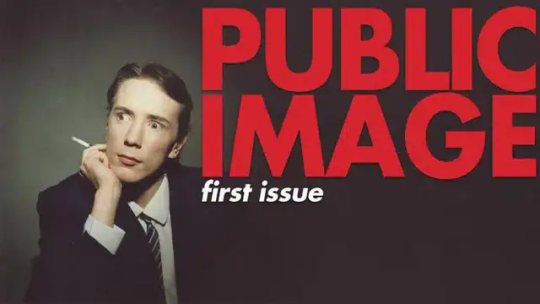
"... PUBLIC IMAGE LTD, CONSISTED OF NEW FORMS MADE WITH ROCK AND ROLL INSTRUMENTATION."
PIC INFO: Spotlight on the typography and/or iconography of "First Issue," the debut album by English post-punk band PUBLIC IMAGE LTD, released by Virgin Records on December 8, 1978. Sleeve concept by Terry Jones & Dennis Morris. 📸: Dennis Morris.
FUTURE SOUND?: "Rock and roll — the loud, fast, and furious fusion of R&B and country, born in the mid-1950s — had been reenergized, brought to fruition, and blown to smithereens by this one movement.
Meanwhile, one possible future of rock and roll, the one posited by PUBLIC IMAGE LTD, consisted of new forms made with rock and roll instrumentation. Those new forms traded R&B for the deeper grooves of funk and reggae. They stripped out folk and country. They disdained cohesion and steadiness and favored loose ends and asymmetry.
These changes added up not to what we know today as rock but to anti-rock, which we know today as post-punk. Specifically, this music, whatever its name, was a racket purveyed by PiL’s leader, the provocateur formerly known as Johnny Rotten, now back to his birth name of John Lydon."
-- POP MATTERS, "PUBLIC IMAGE LTD’S Debut Album Put the "Post" in Post-punk," by Kurt Wildermuth, January 12, 2024
Source: www.popmatters.com/public-image-ltd-debut-album-atr.
#PUBLIC IMAGE LTD.#PUBLIC IMAGE 1978#PUBLIC IMAGE#PUBLIC IMAGE LIMITED#PUBLIC IMAGE LTD#First Issue 1978#Post-punk#1978#PiL First Issue#PiL#Super Seventies#Dennis Morris#70s#PUBLIC IMAGE First Issue#Sleeve Art#1970s#PUBLIC IMAGE First Issue 1978#Typography#Iconography#Cover Art#John Lydon#Virgin Records#PiL 1978#PiL First Issue 1978#Record Adverts#Photosession#Photoshoot#Photography
0 notes
Text
In the event that you believe Project 2025 (which is largely what she's referring to) is some fringe thing that doesn't need to be worried about, here's John Oliver doing a deep dive into what exactly it lays out on Last Week Tonight:
youtube
I understand not wanting to vote for Biden, especially for the unforgivable support he's shown for Israel's genocide of Palestinians, but he's really the only choice we have if we want to continue to enjoy having rights like that to criticize government officials or the right to vote, both of which come under direct threat by the GOP.
If Trump wins a second term, you can kiss your right to vote and your First Amendment rights goodbye, and if you aren't white, male, cisgender, and straight; losing those will be the least of your problems.
Not only will Trump continue to fund the genocide in Palestine, and be even more fervent about it than Biden, he wants to start committing genocide here as well; deporting immigrants en masse and further restricting LGBTQ+ rights until we aren't recognized as human beings anymore.
As an example of what I mean, the Project 2025 manifesto directly states that trans existence will be classified as pornography. Don't believe me? Here's an excerpt from page 5 of the Mandate for Leadership, the Project 2025 handbook (source PDF):
Pornography, manifested today in the omnipresent propagation of transgender ideology and sexualization of children, for instance, is not a political Gordian knot inextricably binding up disparate claims about free speech, property rights, sexual liberation, and child welfare. It has no claim to First Amendment protection. Its purveyors are child predators and misogynistic exploiters of women. Their product is as addictive as any illicit drug and as psychologically destructive as any crime. Pornography should be outlawed. The people who produce and distribute it should be imprisoned. Educators and public librarians who purvey it should be classed as registered sex offenders. And telecommunications and technology firms that facilitate its spread should be shuttered.
The fact that they're willing to be as brazen as that about what they want to do to trans people should be terrifying, especially when we start to consider the kinds of things they want to do that they haven't explicitly stated.
Tl;dr, if you ever want to be able to vote again (and don't wanna have to choose between fleeing the country or dying if you're a minority), VOTE BLUE.
I'm just going to leave this here, because this woman said what I've been trying to articulate for ages much more effectively and succinctly than I've been able to
43K notes
·
View notes
Photo
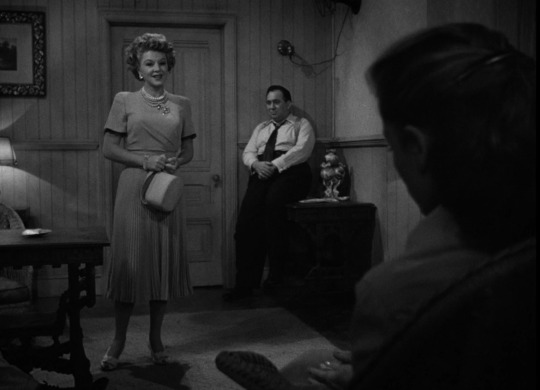
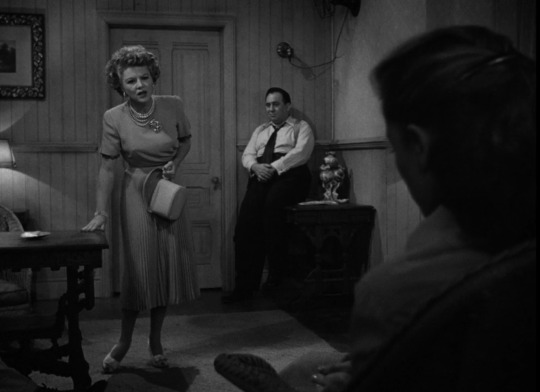
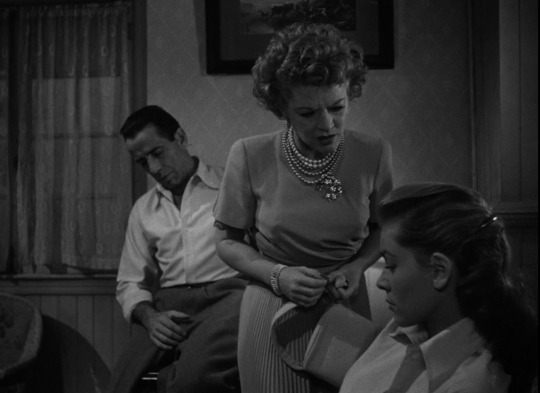
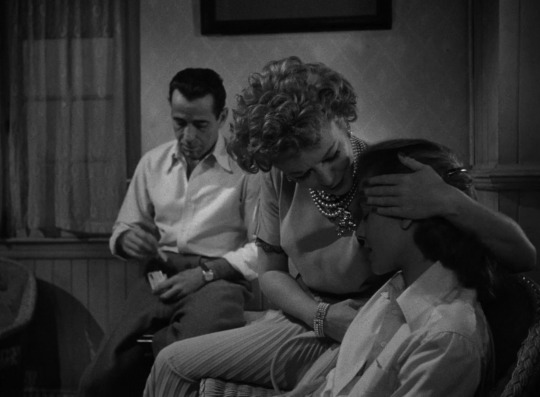
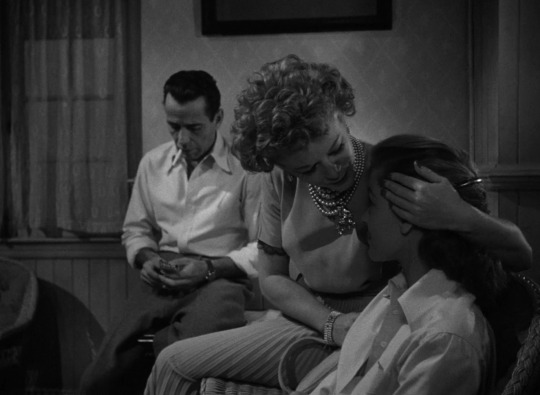
Key Largo (1948)
#me when i think somebody has been mean to lauren bacall. also my name is literally Gay(e)#no but like literally the little moments of empathy between them.. wow the power of women......#contents of my blog.. collecting and purveying..#lauren bacall#claire trevor#key largo#john huston#m
27 notes
·
View notes
Text
Freeing Steve
Flashback
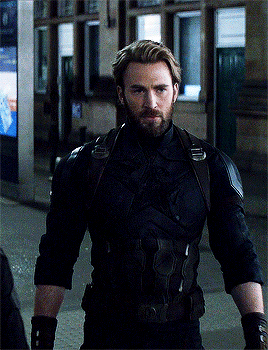
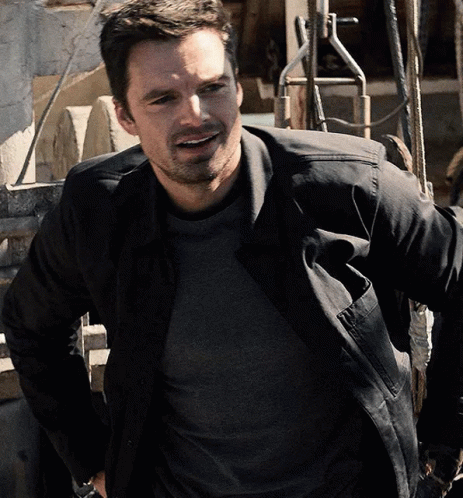

Bucky Barnes shows up at the Sam Wilson’s apartment at the stroke of midnight on a rainy day.
Sam Wilson jumps up from a deep sleep as thunder strikes over them, and Bucky lifts up the window sliding in.
“What the hell are you doing in my bedroom?”
Sam yells.
“Calm down Wilson, we have a few major problems.” Bucky stone cold as ever.
“Like what Barnes?” Sam states arms are crossed.
A shadowy figure walks out of the darkness of the room and in to the light of thunder currently hitting the room.
“Steve is that you?” Sam asks confused as to what is happening.
“Yeah! I can’t stay out of trouble.” Steve admits as his hand glides through his hair.
“You look….” Sam fails to say totally stunned.
“Young again? I know”…..
“We have to go…NOW” Bucky howls.
“Relax Buck, wait for us outside” Steve orders.
Sam gets up to hug Steve but instead slams in to him as they fall on top of each other.
They both laugh uncontrollably trying to do a simple motion to untangle failing.
Steve accidentally pushes forward landing on top of Sam as they kiss slowly, steady and frantically.
“Oh God, I can’t…” Steve gets up to run from his almost confession.
Sam had enough leaping forward he tackles Steve to the ground and kisses him intently.
“Sam, I’m sorry I keep asking for your help.”
“I want you with me, I mean us together”
“This is weird”
“I love you too Steve “
“Will you two get it on already geez”
“What?”
“We need to go “
“Right! I almost forgot about John Walker”
“That asshat is back”
“What about him?”
“His team The Thunderbolts”
“They are coming to find us”
Sam rolls his eyes sighing at the absurdity of his life at this point, and what that means to him.
He does a mad dash trying to figure out if his house will be fine and a loud crash of smashing glass erupts around him.
The three of them are surrounded in a circle with guys who are amassed with multiple types of weaponry.
“Hold your fire Walker”
“Why should I?”
“Taking down the man himself”
“It’s a dream come true”
“Say Goodnight Cap America”
“They said I was a mere imitation of you”
“I am better “
“They will see”
“They will all see”
John raises some sort high technological super sonic weapon Stark patent and aims it at Sam”
“Noooo” Bucky races to block him as the
pure sound left a gaping hole through him and took out Steve in yet same breath.
End of Flashback
Sam woke up in a sweat from that horrific show of a nightmare the third time that week since it happened.
He wipes the sweat from his forehead when he heard the sound of someone breaking in.
Shadows bounces all over the house as Sam leaps off the stairs on to the scene as he ran out.
He flips the light on to reveal a letter under a brown paper bag and freaks out.
He takes a few deep breaths in absorbing all the hell that occurred over a few seconds.
The stench of a familiar scent purveys the room, a sense of familiarity hits him.
The outline of those sexy think lips felt so
real and hardcore on a deep level.
Locking the door Sam can’t stop his eyes from watching the letter he scoops up the bag.
Opening it he peaks inside to see a picture of Bucky, a broken necklace of Peggy Carter and nothing else.
The card only reads I love you Sam in bold letters sending Sam in to a tail spin of madness.
Sam quickly dawns his Falcon costume in a matter he soars to the night sky.
On a building far off from his home a odd tall figure awaits him with a bag of jewels.
All stolen goods from the museum Sam can never deny the truth when it’s clear as day.
“Steve”
“Hey babe!”
“How are you still alive?”
“My suit is more protective but Bucky was hit head on.”
“He is gone”
“No”
“He was your best friend”
“I love you Sam”
“Wait! Stealing? Breaking and entering my home.”
“That’s not like you”
“What are you doing Steve?”
“I’m not Captain America anymore”
“I am my own man now”
“So are you”
“Fuck them”
“Be my partner in crime and Justice”
“Be my antihero and I’ll be yours”
“Yes”
The end
14 notes
·
View notes
Text
By: Amna Khalid and Jeffrey Aaron Snyder
Published: Feb 6, 2023
"We affirm both academic freedom and our responsibility to foster an inclusive learning community. Importantly, these values neither contradict nor supersede each other.”So declared a Hamline University faculty resolution asking President Fayneese S. Miller to resign given her handling of a now-infamous controversy over the display of the Prophet Muhammad in an art-history class. While we applaud the faculty for taking a stand against administrative overreach, we think its position on the relationship between academic freedom and inclusion is mistaken. In our viewthere will inevitably be tensions between these two values. And when those tensions arise, academic freedom must prevail — at least, if we want to ensure a college education worthy of its name.
The assertion that inclusion and academic freedom are not in tension is an article of faith for many of those dedicated to promoting campus inclusion. In 2018, the Harvard University Task Force on Inclusion and Belonging released an 82-page report stating that the “values of academic freedom and inclusion and belonging provide each other with synergistic and mutual reinforcement.” According to this report, the two should not be conceived of as “distinct values that must be accommodated to each other” or, worse still, as “antagonistic goals.” This view is central to the frameworks advanced in books such as Ulrich Baer’s What Snowflakes Get Right: Free Speech, Truth, and Equality on Campus, John Palfrey’s Safe Spaces, Brave Spaces: Diversity and Free Expression in Education andSigal Ben-Porath’s Cancel Wars: How Universities Can Foster Free Speech, Promote Inclusion, and Renew Democracy.
When campuses are facing a controversy like Hamline’s, it’s important to recognize that students, faculty, and administrators don’t have the time for careful, philosophical deliberations about the meaning and value of inclusion. Rather, they find themselves in the grip of a system we call DEI Inc.
DEI Inc. is a logic, a lingo, and a set of administrative policies and practices. The logic is as follows: Education is a product, students are consumers, and campus diversity is a customer-service issue that needs to be administered from the top down. (“Chief diversity officers,” according to an article in Diversity Officer Magazine,“are best defined as ‘change-management specialists.’”) DEI Inc. purveys a safety-and-security model of learning that is highly attuned to harm and that conflates respect for minority students with unwavering affirmation and validation.
Lived experience, the intent-impact gap, microaggressions, trigger warnings, inclusive excellence. You know the language of DEI Inc. when you hear it. It’s a combination of management-consultant buzzwords, social justice slogans, and “therapy speak.” The standard package of DEI Inc. administrative “initiatives” should be familiar too, from antiracism trainings to bias-response teamsand mandatory diversity statements for hiring and promotion.
In many ways the Hamline debacle is the ideal case study for laying bare the unavoidable tensions between academic freedom and the DEI Inc. approach to inclusion. The incident has received considerable attention, but allow us to rehearse some of the key events and the language used by the various people involved.
This past fall semester, the syllabus for Erika López Prater’s global-art-history online course contained an advisory alerting students that the class would feature depictions of holy figures, including the Prophet Muhammad; if students had any concerns about the visual content they were invited to contact her. During the class session on Islamic art, Prater offered students an optional exercise: Analyze a 14th-century Islamic painting of Muhammad receiving his first Quranic revelation. Before presenting the painting, she reiterated the content warning and asked students who would prefer not to see the image to turn off their screens.
Despite Prater’s precautions, a Muslim student complained that pictorial depictions of the prophet offended her Muslim sensibilities: “As a Muslim, and a Black person, I don’t feel like I belong, and I don’t think I’ll ever belong in a community where they don’t value me as a member, and they don’t show the same respect that I show them.”
The student complaint set the campus DEI bureaucracy into motion. David Everett, associate vice president for inclusive excellence, made a public statement calling the classroom exercise “undeniably inconsiderate, disrespectful, and Islamophobic.” Because of the incident, Everett said, “it was decided it was best that this faculty member was no longer part of the Hamline community.” Prater was not given any opportunity to explain the rationale behind the class exercise.
In December, President Miller and David Everett sent an open letter to the campus asserting that “appreciation of religious and other differences should supersede when we know that what we teach will cause harm,”and in particular “respect for the observant Muslim students in that classroom should have superseded academic freedom.” After the news made national and international headlines, Miller doubled down, explaining that her decisions were guided by “prioritizing the well-being of our students,” especially by“minimizing harm.”
Miller’s comments at least had the virtue of offering an honest diagnosis of the tension between academic freedom and inclusion. This tension has only ratcheted up in recent years, as colleges make grand promises to create “environments in which any individual or group feels welcomed, respected, supported, and valued.” With institutions promoting such an expansive definition of “inclusion,” we shouldn’t be surprised when they become ensnared in their own rhetoric and policies. How will DEI administrators respond when a Chinese national complains that a political-science discussion about the persecution of Uyghurs is “harmful anti-Chinese propaganda”?Or when a Christian evangelical says her faith was insulted in a contemporary art class after seeing a Robert Mapplethorpe photograph of two men kissing? The permutations are endless and, for professors who teach sensitive or controversial material, alarming.
The American Association of University Professors clearly states that students do not have the right to shield even their “most cherished beliefs” from challenge or scrutiny:
Ideas that are germane to a subject under discussion in a classroom cannot be censored because a student with particular religious or political beliefs might be offended. Instruction cannot proceed in the atmosphere of fear that would be produced were a teacher to become subject to administrative sanction based upon the idiosyncratic reaction of one or more students. This would create a classroom environment inimical to the free and vigorous exchange of ideas necessary for teaching and learning in higher education.
The censorship of ideas because students with particular political beliefs might take offense is precisely what’s happening across the country with anti-critical-race-theory legislation.The notion of harm is central to these “divisive concepts” laws, which have used Trump’s now-revoked 2020 Executive Order 13950 as a template.Among the things prohibited in this EO was that “any individual should feel discomfort, guilt, anguish, or any other form of psychological distress on account of his or her race or sex.”That white students could shut down discussions of “white privilege” and “structural inequality” because they make them uncomfortable is a most egregious affront to academic freedom. Laws like Florida’s “Stop WOKE Act” underscore that policies oriented around harm-avoidance in the classroom are educational dead ends.
To safeguard high-quality teaching that powerfully and accurately communicates our disciplines and fields, academic freedom must be vigorously defended. Students, DEI administrators and other campus stakeholders should understand that professorshave the right to decide what and howto teach based on their academic expertise and their pedagogical goals. They should also know that there is no academic freedom without academic responsibility. Academic freedom is not a license to mouth off or teachwhatever material suits our fancy. Moreover, when thorny issues arise pertaining to classroom instruction, we have a responsibility to listen to students’ concerns and take them seriously. This does not mean, however, that students should be able to dictate the curriculum.
The Hamline case should serve as a wake-up call for anyone who cares about classroom teaching, critical thinking, and the future of higher education. Some may see this controversy as an exception or an outlier. It’s not. It’s a bellwether of how DEI Inc. is eroding academic freedom. Let’s not forget it took an outpouring of sustained, high-publicity resistance, not to mention a lawsuit, for Hamline to soften its charge of “Islamophobia” against Prater and affirm its commitment to academic freedom.
When institutions proclaim that academic freedom and inclusion coexist in a kind of synergistic harmony, they are trafficking in PR-driven wishful thinking. In the hardest cases, there is no way of upholding an “all are welcome here” brand of inclusion while simultaneously defending academic freedom. Instead, we should turn to the wise words of Hanna Holborn Gray, former president of the University of Chicago: “Education should not be intended to make people comfortable, it is meant to make them think.”
[ Via: https://archive.is/xBXiq ]
#Hamline University#diversity equity and inclusion#diversity#equity#inclusion#islamophobia#academic freedom#academic integrity#corruption of education#higher education#DEI Inc.#DEI industry#religion is a mental illness
6 notes
·
View notes
Text
In 1940, as the Nazis were closing in on Paris, Walter Benjamin, the German Jewish literary critic and avid collector, knew he had to flee the city. Before leaving, he entrusted one of his most treasured possessions to his friend Georges Bataille, who hid it the archives of the French national library. This was a work titled Angelus Novus, by the artist Paul Klee. The print is of a small angel, wings outstretched, and Benjamin describes how the angel’s “face is turned toward the past”, where he sees history as “one single catastrophe which keeps piling wreckage upon wreckage”.
More than 80 years after Benjamin described the unending storm of the early 20th century through the look of an angel in a painting, the Collins English Dictionary has come to a similar conclusion about recent history. Topping its “words of the year” list for 2022 is permacrisis, defined as an “extended period of insecurity and instability”. This new word fits a time when we lurch from crisis to crisis and wreckage piles upon wreckage. Today, Klee’s angel would have a similar look on its face.
The word permacrisis is new, but the situation it describes is not. According to the German historian Reinhart Koselleck we have been living through an age of permanent crisis for at least 230 years. Koselleck observes that prior to the French revolution, a crisis was a medical or legal problem but not much more. After the fall of the ancien regime, crisis becomes the “structural signature of modernity”, he writes. As the 19th century progressed, crises multiplied: there were economic crises, foreign policy crises, cultural crises and intellectual crises.
During the 20th century, the list got much longer. In came existential crises, midlife crises, energy crises and environmental crises. When Koselleck was writing about the subject in the 1970s, he counted up more than 200 kinds of crisis we could then face. Fifty years on, there are probably hundreds of new kinds of crisis on offer. And even if we don’t actually face more crises than in previous eras, we talk about them a lot more. Perhaps it is no wonder we feel we are living in an age of permacrisis.
Waking up each morning to hear about the latest crisis is dispiriting for some, but throughout history it has been a bracing experience for others. In 1857, Friedrich Engels wrote in a letter that “the crisis will make me feel as good as a swim in the ocean”. A hundred years later, John F Kennedy (wrongly) pointed out that in the Chinese language, the word “crisis” is composed of two characters, “one representing danger, and the other, opportunity”. More recently, Elon Musk has argued “if things are not failing, you are not innovating enough”.
On JFK’s misunderstanding of the Chinese approach to crisis, which has been repeated by many others since, Victor H Mair, a professor of Chinese literature at the University of Pennsylvania, points out that in fact the Chinese word for crisis, wēijī, refers to a perilous situation in which you should be particularly cautious. “Those who purvey the doctrine that the Chinese word for ‘crisis’ is composed of elements meaning ‘danger’ and ‘opportunity’ are engaging in a type of muddled thinking that is a danger to society,” he writes. “It lulls people into welcoming crises as unstable situations from which they can benefit.” Revolutionaries, billionaires and politicians may relish the chance to profit from a crisis, but most people world prefer not to have a crisis at all.
We know much more these days about how crises might affect us. A common folk theory is that times of great crisis also lead to great bursts of creativity. The first world war sparked the growth of modernism in painting and literature. The second fuelled innovations in science and technology. The economic crises of the 1970s and 80s are supposed to have inspired the spread of punk and the creation of hip-hop. All this is true, but psychologists have also found that when we are threatened by a crisis, we become more rigid and locked into our beliefs. The creativity researcher Dean Simonton has spent his career looking at breakthroughs in music, philosophy, science and literature. He has found that during periods of crisis, we actually tend to become less creative. When he looked at 5,000 creative individuals over 127 generations in European history, he found that significant creative breakthroughs were less likely during periods of political crisis and instability.
Interestingly, psychologists have found that it is what they call “malevolent creativity” that flourishes when we feel threatened by crisis. These are innovations that tend to be harmful – such as new weapons, torture devices and ingenious scams. A 2019 study which involved observing participants using bricks, found that those who had been threatened before the task tended to come up with more harmful uses of the bricks (such as using them as weapons) than people who did not feel threatened. Other studies have found that external threats can make US college students with liberal beliefs start to think like conservatives. Students presented with information about a threatening situation tended to become increasingly wary of outsiders, and even begin to adopt positions such as an unwillingness to support LGBT people afterwards.
The great irony here is that during moments of crisis – when change is really needed – we tend to become less able to change.
When we suffer significant traumatic events, we tend to have worse wellbeing and life outcomes. However, other studies have shown that in moderate doses, crises can help to build our sense of resilience. Furthermore, we tend to be more resilient if a crisis is shared with others. As Bruce Daisley, the ex-Twitter vice-president, notes: “True resilience lies in a feeling of togetherness, that we’re united with those around us in a shared endeavour.”
Crises are like many things in life – only good in moderation, and best shared with others. Living in an age of permanent crisis that we have to face alone is likely to be a disaster, not just for societies but for ourselves. The challenge our leaders face during times of overwhelming crisis is to avoid letting us plunge into the bracing ocean of change alone, to see if we sink or swim. Nor should they tell us things are fine, encouraging us to hide our heads in the sand. Instead, during moments of significant crisis, the best leaders are able to create some sense of certainty and a shared fate amid the seas of change. This means people won’t feel an overwhelming sense of threat. It also means people do not feel alone. When we feel some certainty and common identity, we are more likely to be able to summon the creativity, ingenuity and energy needed to change things.
4 notes
·
View notes
Text
Halo, Ep.3 – Emergence (Spoilers)
Okay. This episode managed to keep me captivated for most of the episode. And I really am interested to see where the story’s going. I mean, I don’t think this is ever going to be a favorite show of mine, but it’s better than I thought it would be after watching episode one.
Well, almost. I had hoped that they would do something interesting with Kwan. But, no, her plot is what I was afraid it would be except it’s with Soren instead of Master Chief. Skip.
It’s mother vs. daughter in who can figure out the arti…skip.
We learn how the Blessed One met up with the Covenant and why she’s so loyal. Got to admit, can’t really blame her. It looks like she was pretty much a slave when she lived with humans, while the Covenant seem to treat her well (that probably will change, but….). Still not sold on the idea that they needed a human antagonist. That said, I did like the part where she took over the UNSC ship with an unraveled Hunter (seriously 343, you want to change things up? Have Master Chief fight one Hunter in this form at least once).
I feel like Microsoft just was like oh you think you’re going to complain about Master Chief not having his helmet? That’s what you think you’re going to do? Bam, naked John. Fuck you.
Between the documentary I watched earlier this week and the Doctor from this episode, I think I’ve had my fill of creepy ass men for this month, thanks. Seriously, why? Just why? There was no need for that scene.
That being said, I mentioned in my post last week that Cortana’s origin story is a bit horrific. This episode truly ramped that up. As someone who’s played through most of the Halo games, but hasn’t spent much time reading the books and comics; Halsey has always been this character that I’ve been told is supposed to be this horrible person, but I don’t think it ever translated well in the games? I mean, we get enough to know that we should be extremely uneasy about the character, but I never really cared enough about that character to feel that way. This Halsey, on the other hand….That scene with her clone just creeped me out. And what Cortana’s true purpose is, wow.
As for Cortana herself, love the fact that Jen Taylor is back to voice her and I do think they have some of the mannerisms we saw Cortana have in later games. As for her look…now knowing how Cortana was created in this universe (that she’s a porotype of a system that was created by illegal means), I’m guessing she’s supposed to look off. Like it’s clear that the process is still in a rough stage. Because she looks exactly like that clone and that clone doesn’t…there’s something about it that looks artificial, like they couldn’t get it just quite right; close but not quite there.
Anyway, Cortana is inserted into John and it sounds like her true purpose is to take over John’s body at some point. However, the Artifact only seems to react to John’s mind (Soul? Not sure how this works). John realizes that the pellet that suppresses his emotions might be what is holding him back and so he removes it. Turns out that was the correct move as he not only realizes that what he’s been seeing is memories of his childhood, but the fact that he has been in contact with another one of these relics.
John finds out that he used to live on an experimental colony that was sealed after an unknown ship that carried a plague infected the inhabitants (Which, why wasn’t John locked with them?). Of course, this is very much a cover story as Halsey and purvey-doctor discuss how John must not find out the truth.
Anyway, we end this episode with Master Chief, Cortana, Halsey, and literally should be in a jail cell doctor travel to John’s home.
2 notes
·
View notes
Text
Green Beer Came Later: Cincinnati’s Original, Old-Time, Irish Saloons
So ubiquitous are the photographs of mustachioed men, feet up on the brass rail, plug hats screwed firmly upon their noggins, that you might be forgiven if you concluded that all Queen City saloons were identical. This is not the case.
For evidence, let us turn to a meeting of the General Protective Association of Saloon-Keepers convened on Tuesday, 24 April 1883, to discuss a new state law taxing dispensaries of alcoholic potations. Although the meeting convened at a German hall, the president, J.J. Abbihl, introduced the agenda in English. According to the next day’s Commercial Tribune:
“As Mr. Abbihl spoke in the English language, Mr. Albert Springer made a motion that the German language be used in the discussion, but it was agreed to make the explanations in English on account of the importance of the meeting.”
Although the German beer garden holds a sacred place in the gilded memories of Cincinnati, a fair number of local pubs were helmed by Irish and American barkeeps. Any discussion of group meetings involving saloon keepers is clear to distinguish between “German saloon keepers” and “American and Irish saloon keepers.” (Of course, in their segregated neighborhoods, there were also Black saloon-keepers, but they were not allowed to join the protective associations.)
In general, the Irish saloons hewed closer to the river, and you can see this among the watering holes listed in the city directories. You find O’Brien’s at Third & Ludlow, O’Herron’s at Plum & Ann, McCoy’s on Front Street, McSweeney’s at the southern end of John and Connor’s way down on Central.
While the Germans colonized Over-the-Rhine, that was not always the case. The WPA Guide to Cincinnati relates that O’Bryonville, with its Irish namesake but early nickname as “Dutchtown,” accommodated Germans and Irish in (not always happy) comity:
“Thenceforth the name Dutchtown also was applied to the community, and many arguments were started over the bars between Irish and German customers who were constantly striving for social supremacy in the little community.”
This distinction was underlined in 1877 when saloon-keepers throughout the city gathered to pressure Cincinnati’s brewers into maintaining standard prices. Throughout Cincinnati, you paid 5 cents for a tall glass of beer, except in a few disreputable dives where suds were dispensed at two glasses for a nickel. The saloon-keepers realized that there was only one way the dives could afford two beers at that price – some brewery was selling stock at a discount. In those confrontations, the German saloonists met at one location and the Irish and American barkeeps met at another. Although they endorsed the viewpoint of the German proprietors, the Irish and Americans elected their own delegation to confront the brewers.
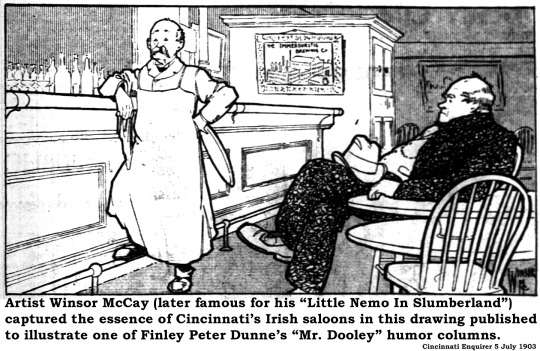
It is clear, from newspaper coverage that the menus differed between German saloons and American and Irish saloons. William C. Smith, in his wonderful little book, “Queen City Yesterdays: Sketches of Cincinnati In The Eighties,” makes a distinction between the beer-centered German establishments and the Irish and America saloons that purveyed mostly the harder stuff. Smith avers there ought to be a strict differentiation between beer saloons and what he calls “boozing kens.” His description offers a physiological excuse for Irish and American drinking patterns:
“On a shelf next to the wall various brands of liquor were in evidence, some labeled and others in plain bottles, the quality of the latter known only to God and the proprietor. These emporiums were patronized by the Irish and American inhabitants who believed their stomachs to be lined with a substance that beer might corrode, whereas whiskey apparently acted only as a preservative and polishing agent.”
That distinction is fortified by a joke that, according to the Cincinnati Enquirer [23 September 1917], was so old it caused Cain to slay Abel:
“An Irish saloon keeper hired a new bartender. A man came in and got a drink of whisky and then said: ‘I’ll pay for this Saturday. My name is Murphy. The boss knows me.’
“’Wait and I’ll ask the boss,’ said the bartender. ‘Oh. boss,’ yelled the bartender up the stairs. ‘Is Murphy good for a drink?’
“’Has he had it?’ asked the boss.
“’He has,’ replied the bartender.
“’He is,’ replied the boss.”
It is not the case that all Irish and American saloons sold whiskey exclusively. Perhaps the premier Irish saloon in Cincinnati was Andy Gilligan’s Café on Vine Street directly opposite the Enquirer building between Sixth and Seventh streets. For nearly thirty years, Gilligan was famous for his luxurious beard, extending from his chin to his belt buckle. On warm days he was a living Vine Street landmark, basking in the afternoon sun as he stood outside his café enjoying a good 15-cent cigar. Gilligan ran book on local prizefights, but the cops usually looked the other way. He was known as an easy touch for actors down on their luck and a frequent host to heavy-weight champ (and prodigious drinker) John L. Sullivan. Despite his largesse, Gilligan left an estate worth a respectable $75,000 in 1905 dollars. Decades after his death, the Cincinnati Post printed a remembrance:
“Do you remember when no St. Patrick’s Day was complete without a peek at Colonel Andy Gilligan and his long whiskers resting on a great green sash in the Hibernians’ annual March 17 parade?”
During World War I, as Prohibition loomed, evidence accumulated that all of Cincinnati’s saloon-keepers were in the same, sinking, boat. As anti-German hysteria swept the city, nationalist firebrands were quick to point out Irish saloons catering to a German clientele. According to the Cincinnati Post [14 September 1917]:
“James J. Dolan runs a saloon at Richmond-st. and Central-av., which he calls ‘Zum Guten Happen.’ Now that German has nearly been put out of the schools, somebody, no doubt, will start a movement to put it out of Irish saloons.”
A similar situation obtained at an Oakley saloon managed by Patrick J. McHugh, called “Auf Wiedersehen.”
No discussion of Irish saloons can conclude without a mention of green beer. Now, before 1917, “green beer” meant improperly aged suds. A 1908 Wiedemann advertisement advised against drinking green beer because “it has practically no flavor and will cause biliousness.”
As for the annual emerald-hued St. Patrick’s Day quaff, blame the Elks. In 1917, in honor of the patron saint of Ireland, Cincinnati’s Elks lodges consumed green beer in abundant quantities. According to the Cincinnati Post, the verdant libation was concocted by a German brewer.
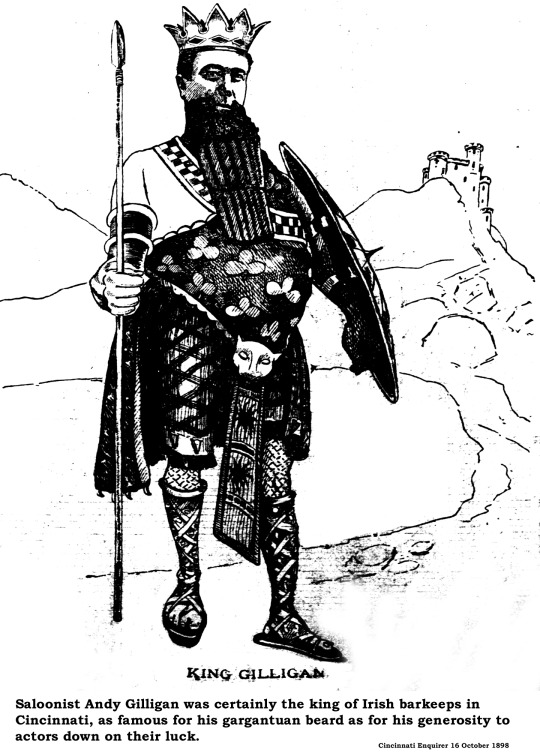
8 notes
·
View notes